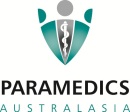 The last few months have seen me answering questions (more than a few times) about one of the recommendations listed as an opportunity in the FEMA Emergency vehicle visibility and conspicuity study. This one statement about reflective material has caused as much debate as the full report itself. The report advises: “Concentrate retro-reflective material lower on emergency vehicles to optimise interaction with approaching vehicles’ headlamps.” This is a simple piece of advice that recognises the sharp horizontal light cut-off found in the headlamps of modern vehicles. In basic terms; if you park a car at night so it is pointing at a wall a short distance away, then you will see that the lower part of the wall is brightly illuminated and the upper part of the wall is still relatively dark. The level of the cut-off line varies with the height and size of the vehicle, but not by much.
The last few months have seen me answering questions (more than a few times) about one of the recommendations listed as an opportunity in the FEMA Emergency vehicle visibility and conspicuity study. This one statement about reflective material has caused as much debate as the full report itself. The report advises: “Concentrate retro-reflective material lower on emergency vehicles to optimise interaction with approaching vehicles’ headlamps.” This is a simple piece of advice that recognises the sharp horizontal light cut-off found in the headlamps of modern vehicles. In basic terms; if you park a car at night so it is pointing at a wall a short distance away, then you will see that the lower part of the wall is brightly illuminated and the upper part of the wall is still relatively dark. The level of the cut-off line varies with the height and size of the vehicle, but not by much.
This sharply defined headlamp cut-off has serious implications for reflective signage mounted at a high levels above the roadway. This problem also affects large emergency vehicles like fire trucks and some taller ambulances. The companies that market reflective products have responded by developing new high-intensity (high reflectance) materials that use microprism technology to increase the level of reflected light. These improved materials are designed to compensate for the distinct light cut-off and operate more efficiently at lower illumination levels than the earlier beaded types.
So how does this affect emergency vehicles? Well, there have been many differing interpretations of how high up the vehicle the reflective stripes and markings should extend. The FEMA study covered all emergency services in the United States. As such, the vehicles used by Police, Fire and EMS agencies come in a great variety of shapes and sizes. The variations are endless; from Segway peoplemovers to sedans, van style ambulances to fire appliances and all the way up to truck/tractor-trailer combinations. The new trend towards lowering the level of reflective markings has begun to gain momentum.
Fluorescent/reflective striping has begun to appear along the doorsill of a large number of emergency vehicles. These low-level stripes are very effective when used in conjunction with an effective, wide, waistline stripe and additional contour stripes that follow the vehicle outline. The full vehicle waistline stripe is still the most important conspicuity component as it defines vehicle presence and length (thus overall size). The wheel arches may be cut out of the waistline stripe to further define size and vehicle orientation. Most important; the waistline stripe should be clearly visible when viewed through the windows of an average sized family car that is nearby or alongside. This helps the crew by providing maximum levels of emergency vehicle recognition for the surrounding drivers.








